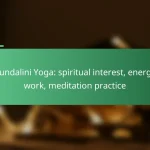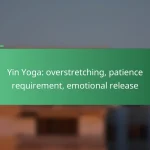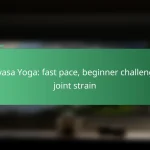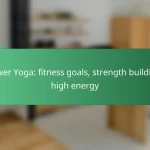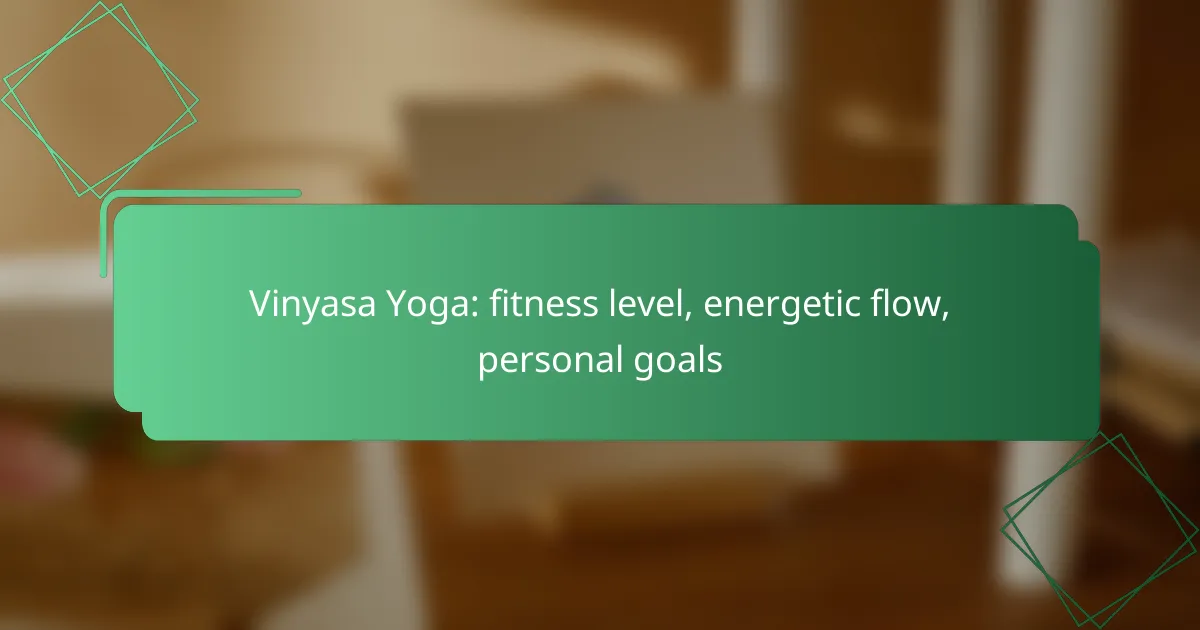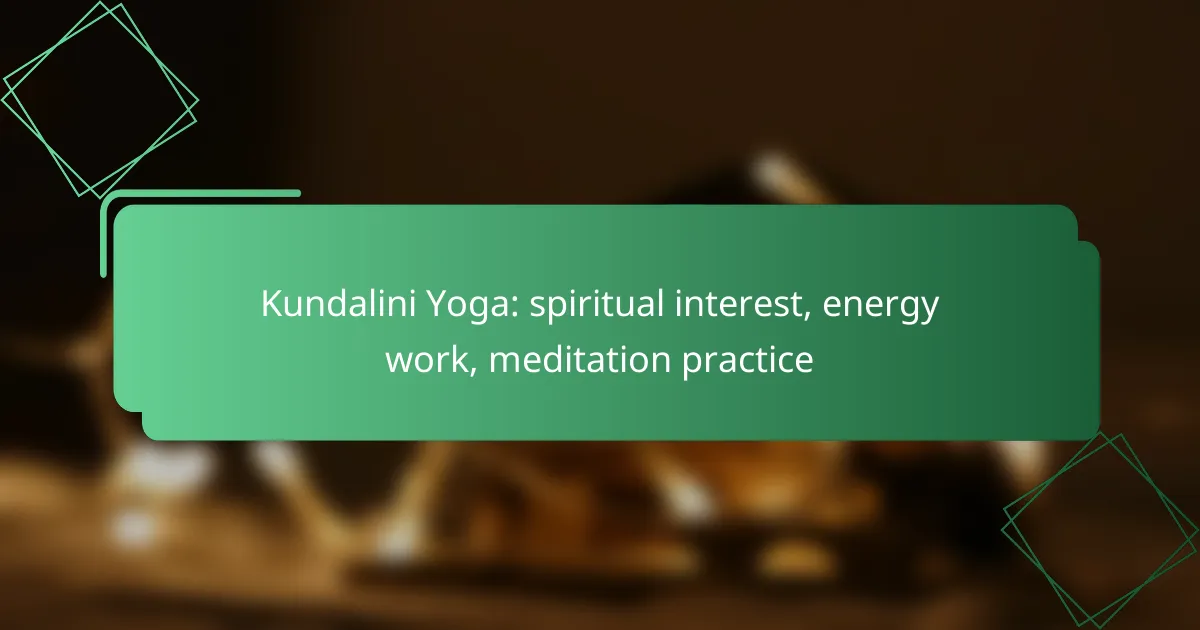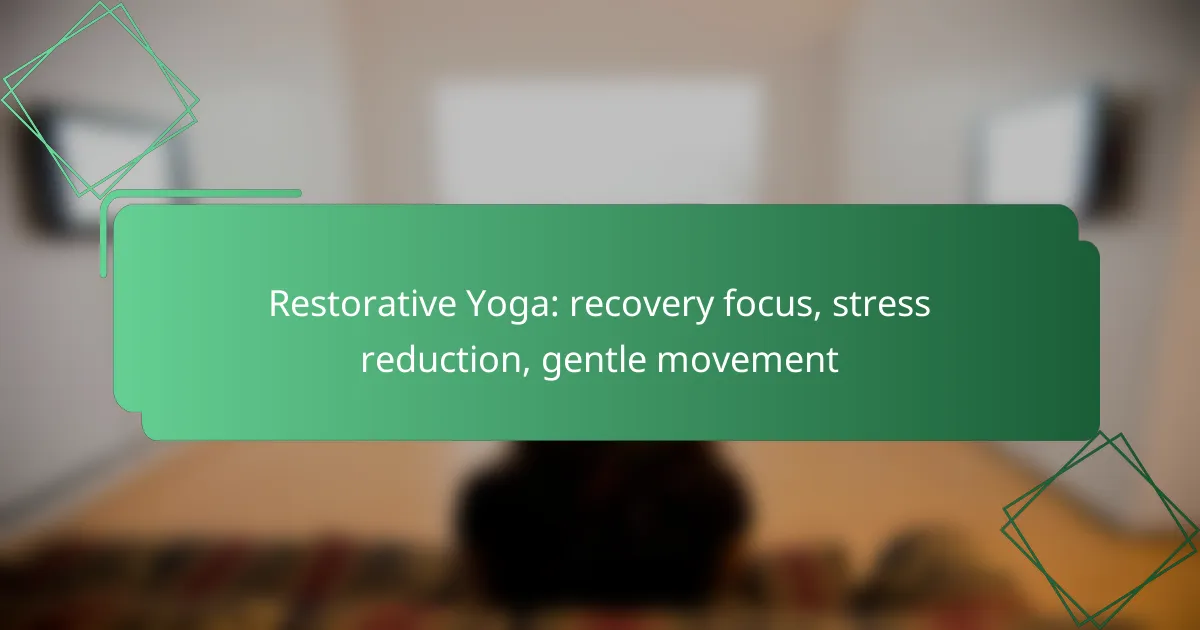Vinyasa Yoga is a dynamic practice that enhances fitness levels through a fluid flow of movement, engaging various muscle groups while promoting cardiovascular health. By emphasizing the connection between breath and movement, it fosters strength, flexibility, and mindfulness, making it an effective way to align with personal health and wellness goals.
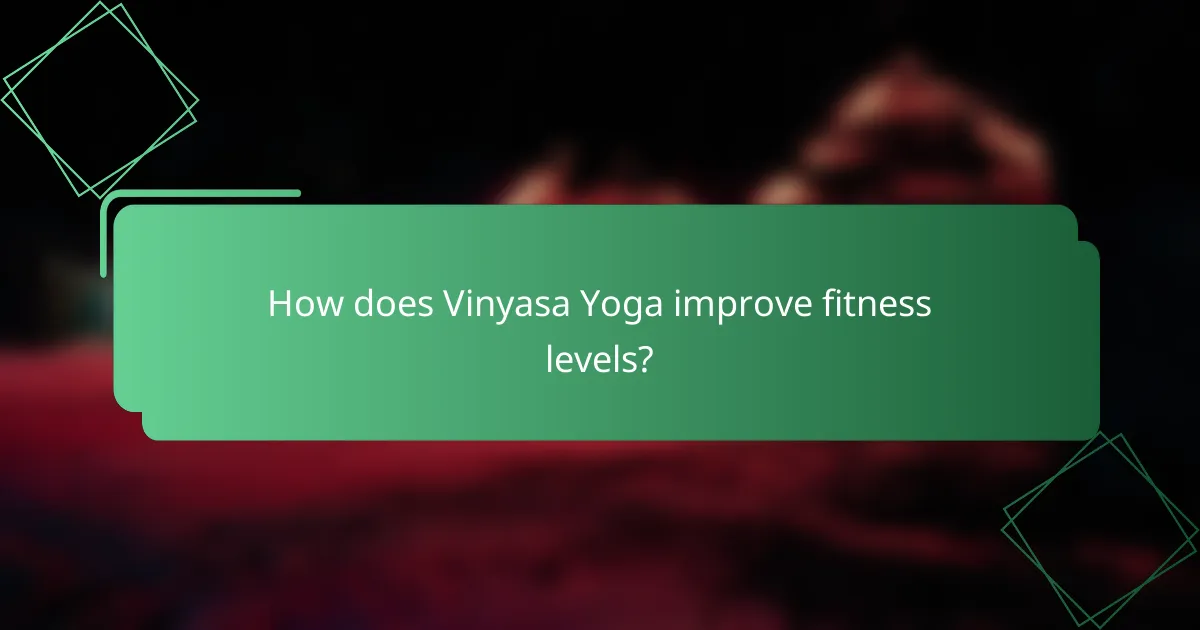
How does Vinyasa Yoga improve fitness levels?
Vinyasa Yoga enhances fitness levels by promoting a dynamic flow of movement that engages multiple muscle groups while improving cardiovascular health. This practice not only builds strength and flexibility but also supports overall well-being through mindful breathing and movement.
Increases cardiovascular endurance
Vinyasa Yoga can significantly boost cardiovascular endurance by incorporating continuous movement and transitions between poses. The rhythmic nature of the practice elevates the heart rate, which can improve heart health over time.
To maximize cardiovascular benefits, aim for sessions that last at least 60 minutes, focusing on maintaining a steady pace. Regular practice can lead to improved stamina and better performance in other physical activities.
Enhances flexibility and strength
This style of yoga is effective for enhancing both flexibility and strength through a variety of poses that target different muscle groups. Poses such as Downward Dog and Warrior sequences stretch and strengthen simultaneously, promoting balanced muscle development.
For optimal results, incorporate Vinyasa sessions into your weekly routine, aiming for at least three classes per week. Over time, practitioners often notice increased range of motion and muscle tone.
Supports weight management
Engaging in Vinyasa Yoga can aid in weight management by burning calories and building muscle, which in turn boosts metabolism. The intensity of the flow can vary, allowing for both moderate and vigorous workouts that contribute to calorie expenditure.
To effectively support weight management, combine Vinyasa Yoga with a balanced diet and other forms of exercise. Keeping track of your progress and setting realistic goals can enhance motivation and adherence to your fitness journey.

What is the energetic flow in Vinyasa Yoga?
The energetic flow in Vinyasa Yoga refers to the seamless transition between poses, creating a dynamic and fluid practice. This approach emphasizes the connection between breath and movement, allowing practitioners to cultivate strength, flexibility, and mindfulness.
Continuous movement between poses
Continuous movement is a hallmark of Vinyasa Yoga, where each pose flows into the next without interruption. This fluidity not only enhances physical endurance but also promotes a meditative state, as practitioners focus on the rhythm of their movements. Common sequences include transitioning from Downward Dog to Plank, and then to Chaturanga, which exemplifies this continuous flow.
To maintain this energetic flow, it’s essential to be aware of your body and adjust your pace according to your fitness level. Beginners may start with slower transitions, while more experienced practitioners can explore quicker sequences to challenge themselves.
Breath synchronization with movement
Breath synchronization is crucial in Vinyasa Yoga, as each inhalation and exhalation is paired with specific movements. This practice not only enhances the physical benefits of the poses but also fosters a deeper connection to the body and mind. For instance, inhaling while reaching arms overhead and exhaling while folding forward creates a harmonious flow.
To effectively synchronize breath with movement, focus on your breathing patterns throughout the practice. A common guideline is to inhale during upward movements and exhale during downward movements. This alignment can help prevent strain and improve overall performance in your practice.

How can Vinyasa Yoga align with personal goals?
Vinyasa Yoga can effectively align with personal goals by promoting physical fitness, mental clarity, and emotional balance. Its dynamic flow encourages practitioners to set and achieve specific objectives related to their health and well-being.
Stress reduction techniques
Vinyasa Yoga incorporates various techniques that help reduce stress, such as controlled breathing and mindful movement. Practicing these techniques can lower cortisol levels, leading to a calmer state of mind.
Incorporating poses like Child’s Pose or Forward Bend during your practice can enhance relaxation. Aim to spend a few minutes in these poses, focusing on your breath to deepen the stress-relief effects.
Goal setting for physical health
Setting clear, achievable goals in Vinyasa Yoga can enhance your physical health. Start by identifying specific areas you want to improve, such as flexibility, strength, or endurance.
For example, you might set a goal to master a particular pose, like Warrior II, within a few weeks. Track your progress by noting how your body feels and responds to the practice over time.
Mindfulness and mental clarity
Vinyasa Yoga fosters mindfulness, which can lead to improved mental clarity. By focusing on your breath and movements, you cultivate a greater awareness of your thoughts and feelings.
To enhance this aspect, dedicate a portion of your practice to seated meditation or breathwork. Even a few minutes of focused breathing can significantly boost your mental clarity and overall well-being.
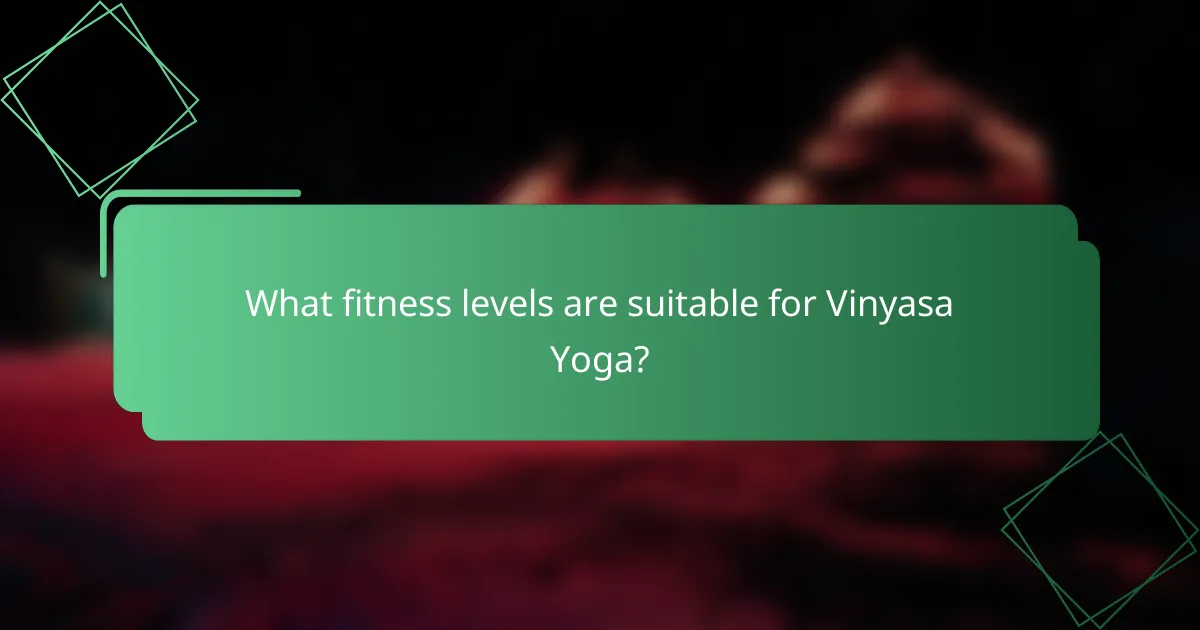
What fitness levels are suitable for Vinyasa Yoga?
Vinyasa Yoga is suitable for a wide range of fitness levels, from beginners to advanced practitioners. The dynamic flow and adaptability of the practice allow individuals to engage at their own pace and skill level.
Beginner-friendly options available
Many Vinyasa classes cater specifically to beginners, focusing on foundational poses and breath coordination. These classes often emphasize alignment and provide modifications to ensure accessibility.
Beginners should look for classes labeled as “gentle” or “beginner” Vinyasa, which typically include slower-paced sequences. This approach helps newcomers build confidence and familiarity with the practice.
Intermediate and advanced variations
Intermediate and advanced Vinyasa classes introduce more complex poses and faster transitions, challenging practitioners to deepen their practice. These sessions may incorporate advanced techniques such as arm balances and inversions.
Practitioners at these levels should be comfortable with foundational poses and have a solid understanding of breath control. It’s beneficial to attend workshops or specialized classes to refine skills and explore new variations safely.
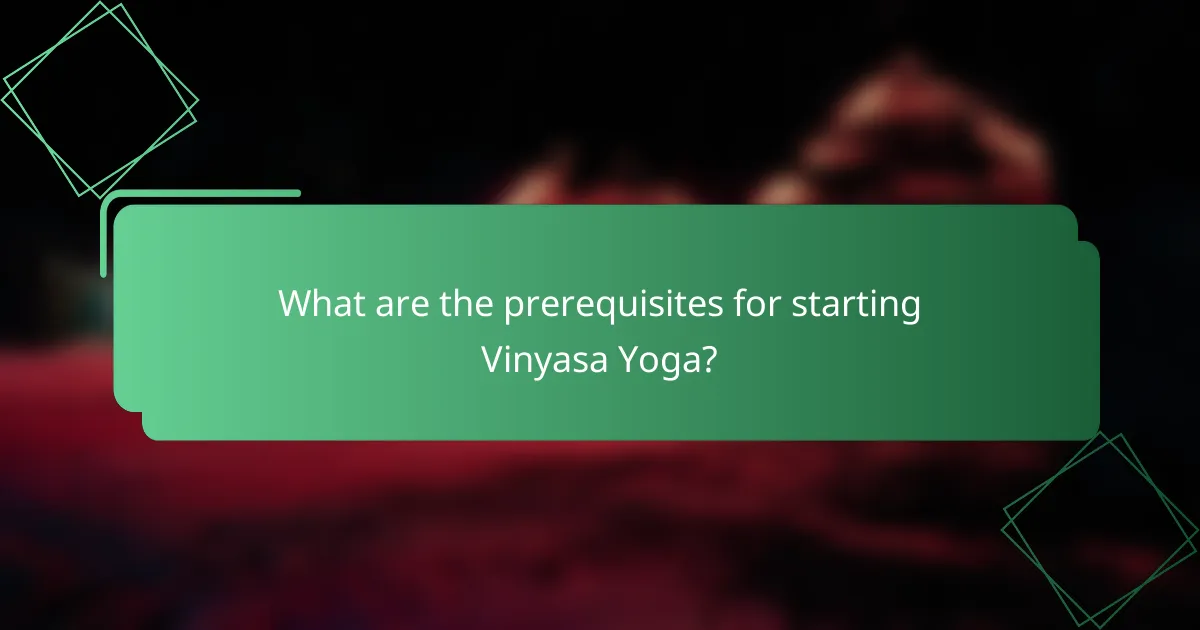
What are the prerequisites for starting Vinyasa Yoga?
Starting Vinyasa Yoga requires no specific prerequisites, making it accessible to beginners. However, having a basic understanding of yoga terminology can enhance your experience and help you follow instructions more effectively.
No prior experience needed
Vinyasa Yoga is designed for individuals at all fitness levels, including those who have never practiced yoga before. The flowing movements and sequences can be adapted to suit your personal abilities, allowing you to progress at your own pace.
As a beginner, focus on listening to your body and not pushing beyond your limits. Many studios offer beginner classes or introductory workshops that can provide a supportive environment to learn the basics.
Basic understanding of yoga terminology
Familiarizing yourself with common yoga terms can significantly improve your Vinyasa Yoga practice. Terms like “asana” (posture), “vinyasa” (flow), and “pranayama” (breath control) are frequently used in classes and can help you follow along more easily.
Consider reviewing a glossary of yoga terms or attending a few introductory classes to gain this foundational knowledge. This understanding will not only enhance your practice but also help you communicate effectively with instructors and fellow practitioners.
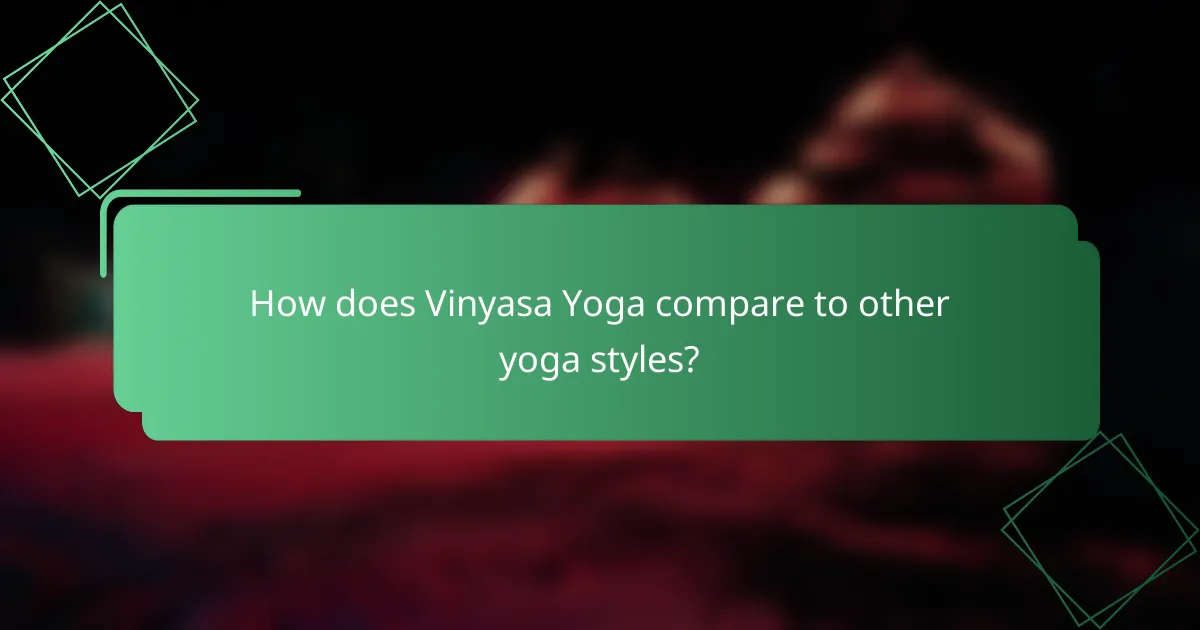
How does Vinyasa Yoga compare to other yoga styles?
Vinyasa Yoga is characterized by its dynamic flow and synchronization of breath with movement, setting it apart from other styles. Unlike more static forms, Vinyasa emphasizes continuous transitions between postures, making it a more energetic practice that can cater to various fitness levels and personal goals.
Differences from Hatha Yoga
Hatha Yoga is often seen as a foundational style that focuses on holding postures for longer periods, promoting strength and flexibility. In contrast, Vinyasa Yoga incorporates a fluid sequence of poses that are linked together, creating a more vigorous workout. This difference makes Vinyasa suitable for those seeking a more aerobic experience.
While Hatha may be ideal for beginners looking to learn the basics, Vinyasa can appeal to practitioners who enjoy a faster pace and a more invigorating approach. The choice between the two often depends on individual fitness levels and personal preferences.
Comparison with Ashtanga Yoga
Ashtanga Yoga is a structured style that follows a specific sequence of poses performed in a set order, which can be demanding and requires commitment. Vinyasa, however, offers more flexibility in its sequences, allowing instructors to create varied classes that can adapt to different skill levels and personal goals.
Both styles emphasize breath and movement, but Vinyasa can be more accessible for those who prefer a less rigid structure. Practitioners may find Vinyasa appealing if they enjoy creativity in their practice, while Ashtanga may attract those who thrive on routine and discipline.
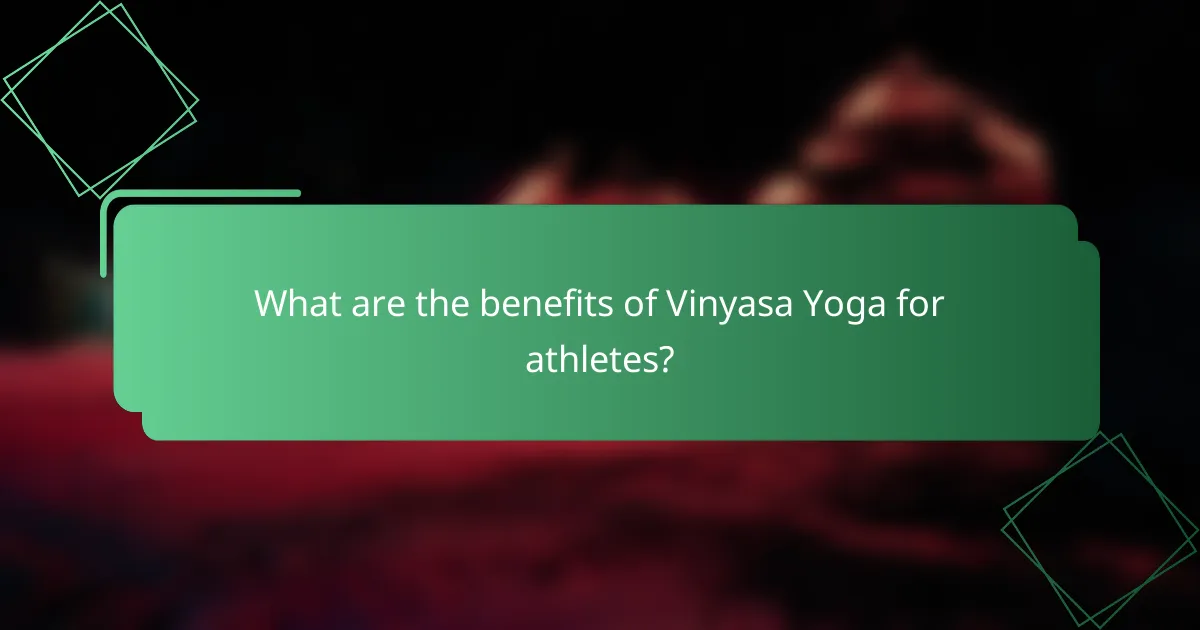
What are the benefits of Vinyasa Yoga for athletes?
Vinyasa Yoga offers numerous benefits for athletes, including improved flexibility, enhanced recovery, and increased overall performance. By integrating breath with movement, this dynamic practice helps athletes maintain peak physical condition while reducing the risk of injury.
Improved recovery time
Vinyasa Yoga can significantly shorten recovery time for athletes by promoting blood flow and reducing muscle tension. The gentle stretching and mindful breathing help to flush out lactic acid and other toxins that accumulate during intense workouts.
Incorporating Vinyasa sessions into a training regimen can lead to quicker recovery, allowing athletes to train more frequently and effectively. Aim for 1-2 sessions per week to experience noticeable improvements in recovery.
Enhanced performance through flexibility
Flexibility is crucial for athletic performance, and Vinyasa Yoga enhances this aspect through a series of flowing postures. These movements increase the range of motion in joints, which can lead to better technique and reduced risk of injury.
To maximize flexibility gains, focus on poses that target key muscle groups used in your sport. For instance, athletes in running may benefit from hip openers, while swimmers might focus on shoulder stretches. Regular practice can lead to significant improvements in flexibility over time.

